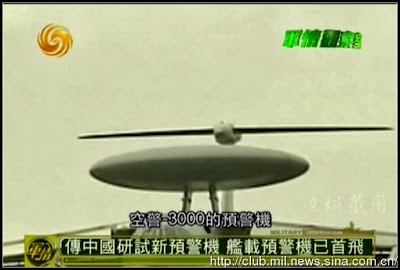China's next generation early warning aircraft will be able to surpass all of its global competitors, according to Wang Xiaomo, vice president of the China Academy of Electronics and Information Technology, in an interview with the party-run People's Daily.
With the advent of the US airborne early warning and control system during the Gulf War of 1991, the PLA Air Force realized that early aircrafts with similar capabilities as the US E-2 and E-3 models are crucial in any potential conflict over the Taiwan Strait, East China Sea and South China Sea.
Wang spent his entire life mounting advanced radars on PLA aircraft. In total, he has developed three airborne radars for China. During an exercise in northwestern China in 2012, two fighters from the PLA Air Force received orders for the first time from an early warning aircraft.
 |
| KJ-3000 |
Wang's life was tough as an young engineer living in the mountain regions, he said. During this period in his life — coinciding with the internal struggle of the Cultural Revolution — China also faced external pressure from the Soviet Union and the United States. Wang was happy to have served his nation, even though the living conditions were extremely poor at that time, he said.
Things began to change after the collapse of the Soviet Union. China could no longer rely solely on ground radar systems to defend its territory from foreign invaders, Wang said. China has 9.6 million square kilometers of land and 3 million square kilometers of water, making the expanse coverable only by early warning aircraft.
Wang has personally trained 18 experts in developing China's early warning aircraft. While most of the aircraft and control systems are designed for the PLA Air Force and Navy, many of them can be exported to nations friendly towards China, Wang said.
Although China is still unable to challenge the US in this field, Wang said that his 'China Dream' is to develop a radar for the best early warning aircraft in the world."




No comments:
Post a Comment